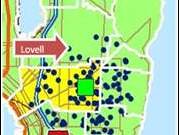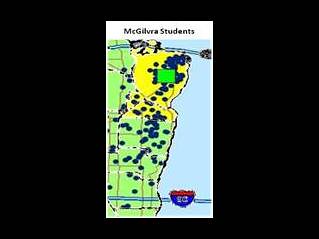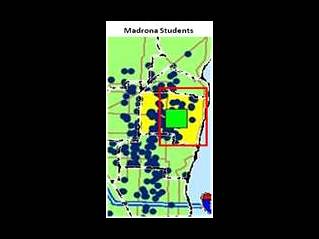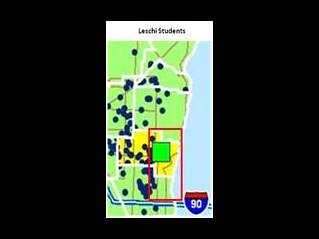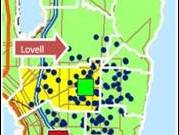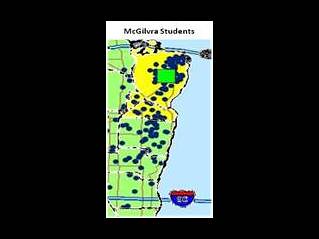
The more one looks at the School closure plan the more appalling it becomes. I’m not a parent, but it concerns me as a CD and Seattle resident, and frankly is offensive to anyone who cares about thoughtful public policy. It’s shortsighted, undermines the goals it purports to serve, and rests on superficial (or intentionally misleading) analysis. Worst of all, it will perpetuate the irrational system that leaves only about 20 percent of students in the CD attending their neighborhood school.
There are all sorts of flaws in the plan and the process. I’ll focus on four that I found pretty outrageous.
1) Data “analysis” – The closures are allegedly based in part on Projected Enrollment by Reference Area. Here’s a sample of the conclusions they draw, this one on Thurgood Marshall: “Due to decreased birth rates since 1992, the projected enrollment is expected to decrease by 79 students.” So, how big is the decrease in birth rates? Well, from 1992-96 avg,. # of births in that area was 71.2. By 2001-05 that average was … 76.0. Some “decrease” huh? You can call it a decline in birth rates, ONLY if you take 1992 only and 2005 only. (Would be the exact opposite if you took 1993 and 2004).
2) Projected Enrollment: A Self-Fullfilling Prophecy – Now contrast the conclusion above for TM with this on Montlake Elementary: “Despite the decreased birth rates since 1992, the projected enrollment is expected to increase by 42 students, likely due to migration into the reference area.”
This is the biggest problem with this whole plan – it speaks to the migration of students like it’s an act of nature, like bird migration, that the school board has no control over. It’s seems to assume that all parents in the CD and farther south are just dying to send their kids to schools farther north. It ignores the alleged goal of promoting neighborhood schools (and cutting transportation costs in the process). In doing so, it perpetuates the exact system that has put us in this spot to begin with: a self-fulfilling system of “choice” where parents make the completely understandable short-term choice to send their kids to schools that have received more investment and parental support (e.g. McGilvra) rather than a neighborhood school that is still a work in progress (like Minor, Leschi or Madrona). (See maps). It undermines the entire idea of neighborhood schools in less affluent areas – and in the process undermines neighborhoods. (Leaving Minor aside, it’s almost tragic to think of the beautiful Mann school sitting empty and the impact that will have on the neighborhood).
So now the plan is to use the migration data of a flawed system to support further migration and reinforcing that flawed system.
3) Building Assessments: ANOTHER Self-Fulfilling Prophecy – The other determing factor was allegedly the assessments of physical shape of the buildings – which of course is equally self fulfilling. Twenty two elementary schools have been replaced or renovated since 1995 in the first two phases of the Building Excellence program. NONE of those 22 are in the CD – and only Madrona is included among those serving a high proportion of CD students).
4) Assigning TT Minor Students to Lowell – (changed from initial proposal). In the initial proposal, Minor students would be assigned to Madrona and Leschi. Lowell was to be closed. In the final recommendation, Lowell was removed from the list of closures (despite the fact that it’s one of the few facilities deemed to be in worse shape than Minor) and the Minor students were shifted to Lowell. Leaving aside the merits of closing Minor, reassigning students to Madrona and Leshci at least made sense – given where most Minor students live. (See Map) Moving them to Lowell is atrocious.
For the overwhelming majority of Minor students this would INCREASE the distance to their neighborhood school by AT LEAST A MILE!. If you live around 23rd and Union, your child’s “neighborhood” school will be 1.6 miles away! And this decision was made AFTER the public hearing at Minor – so parents could only respond in the few district wide meetings.
And here’s the irony – with the APP program at Lowell, being split in ½, APP students from the Central Cluster won’t go to Lowell anymore. Beyond the irony, there’s an insidious impact. Right now, Lowell (APP) has only 19 African American students – and it’s a pretty safe bet most of those will move to Marshall. Minor is overwhelmingly minority students (only 30 white students, and a good proportion in the Montessori program that will move to Leschi). They conveniently don’t breakout those stats by program, so can’t get exact numbers. But the net is that you will have a remarkably segregated two-tiers at Lowell, with the APP program 95%+ White/Asian and the regular K-5 students 90%+ Black/Latino (and nowhere close to where they live).
Bottom line: This plan may save some money, if not as much as the board hopes. But it’s NOT about equity and access. It’s not about aligning resources with demographics.
The school system is not equitable; this makes it LESS so.
The school “choice” system undermines less affluent neighborhoods – and this plan makes it WORSE.
Much of the school planning and investment in the past has screwed the CD (aside from Garfield); this plan does it again!
I encourage everyone tocall/write/scream at whoever you can before the School Board vote on Thursday and tell them to vote against this enormous step backwards.
